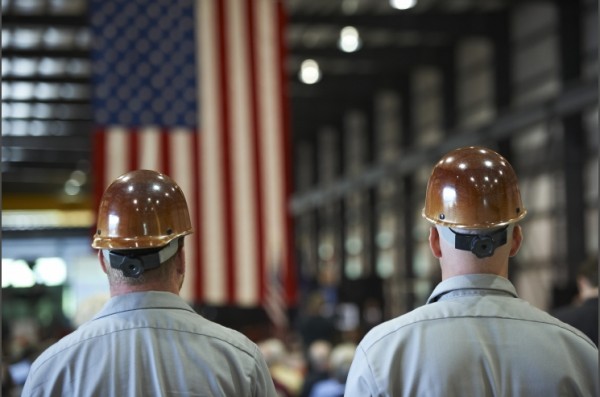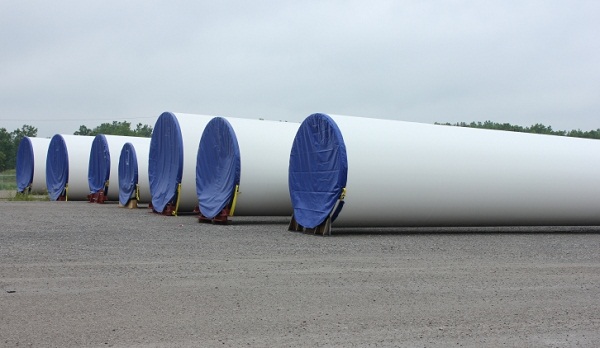Ventower Industries, a fledgling wind tower manufacturer in Monroe, Mich., about 40 miles south of Detroit and half that distance north from Toledo, Ohio, got a nice write-up on the U.S. Department of Energy’s blog a week or so ago.
What it needs now is business.

Layoffs are slowly rolling through the wind-power supply chain as the industry gears down in anticipation of the Jan. 1, 2013, expiration of the production tax credit. Ventower workers haven’t been hit by pink slips. Yet.
“Orders are drying up,” the company’s president, Gregory Adanin, said in a telephone interview on Thursday. “We’re no different than the rest of the industry. There’s a lot of uncertainty.”
Ventower opened a year ago to fanfare. It was a success story that public officials from Lansing to Washington helped make happen and wanted to be part of: A brownfield at the Port of Monroe, within sight of one of the country’s biggest coal-fired power plants, would bring manufacturing jobs to the Rust Belt and clean energy to America.
A $2.5 million tax credit from the Recovery Act for the purchase of manufacturing equipment, as well as other loans, tax credits and grants came as the company tackled “the complex environmental issues” associated with the site.
Since then, a Ventower workforce that now stands at 53 has produced 14 wind towers, with No. 15 expected soon. But a lot more could be coming out of the 115,000-square foot plant.
“At full capacity we’d have about 150 to 160 workers,” Adanin said. “We’d like to get there. It would be great for us and great for the community.”
That might not happen for a long time, or ever, without the production tax credit. Analysts share the view that wind – responsible for 35 percent of all new electricity generation in the U.S. in the past five years – will falter without the support that government traditionally gives new forms of energy production.
In an AOL Energy white paper [PDF], analysts from IHS Emerging Energy Research forecast that “without the PTC, installations could collapse from an annual peak of 10.5 (gigawatts) in 2012 to as low as 1.5 GW in 2013.”
The 10.5 GW figure is inflated as companies rush to get projects online before the end-of-year PTC expiration. But since 2005 – even through the financial collapse – wind has been adding 5.6 GW a year in the U.S. on average. A falloff to 1.5 GW would be dramatic, any way you slice it.
The PTC, set to expire at the end of this year, showed signs of life recently when an extension won approval as part of a Senate Finance Committee’s package of tax breaks. That’s just one step on a long journey, however. The legislation still needs to be approved by the full Senate as well as the House, and that’s not going to happen soon, not with Congress on August recess. The industry has been warning since late last year that a delay in extending the tax credit would begin to exact a jobs toll well before the actual expiration, and that appears to be coming to pass.

Two rounds of layoffs by Vestas in Colorado have cost 120 jobs. The American Wind Energy Association said earlier this month that four other companies announced immediate or looming layoffs that by November could affect a total of at least 476 full-time employees at DMI Industries in Tulsa, Okla., and West Fargo, N.D.; LM Wind Power in Little Rock, Ark.; and Trinity Structural Towers in Dallas, Tex.
AWEA CEO Denise Bode said in a statement that the companies “represent what is happening and will continue to happen across the country in the U.S. wind industry if these businesses are not provided the policy certainty they need to continue to invest in America and its workers.”
But is it already too late?
Ventower’s Adanin, who sounded like a man struggling to keep his enterprise afloat, remained hopeful. “Better late than never,” he said.